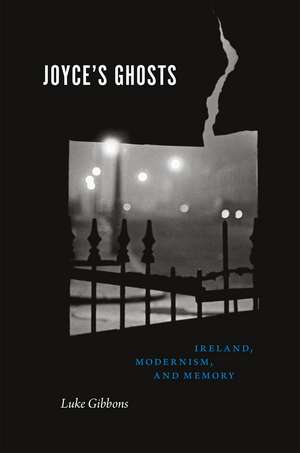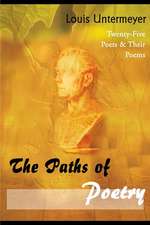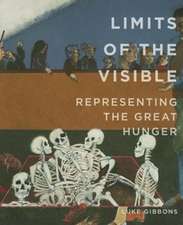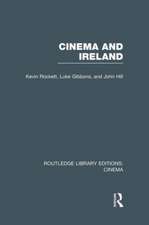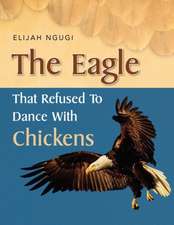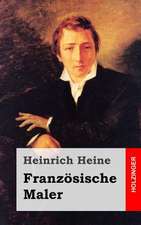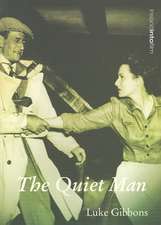Joyce's Ghosts: Ireland, Modernism, and Memory
Autor Professor Luke Gibbonsen Limba Engleză Paperback – 16 noi 2017
For decades, James Joyce’s modernism has overshadowed his Irishness, as his self-imposed exile and association with the high modernism of Europe’s urban centers has led critics to see him almost exclusively as a cosmopolitan figure.
In Joyce’s Ghosts, Luke Gibbons mounts a powerful argument that this view is mistaken: Joyce’s Irishness is intrinsic to his modernism, informing his most distinctive literary experiments. Ireland, Gibbons shows, is not just a source of subject matter or content for Joyce, but of form itself. Joyce’s stylistic innovations can be traced at least as much to the tragedies of Irish history as to the shock of European modernity, as he explores the incomplete project of inner life under colonialism. Joyce’s language, Gibbons reveals, is haunted by ghosts, less concerned with the stream of consciousness than with a vernacular interior dialogue, the “shout in the street,” that gives room to outside voices and shadowy presences, the disruptions of a late colonial culture in crisis.
Showing us how memory under modernism breaks free of the nightmare of history, and how in doing so it gives birth to new forms, Gibbons forces us to think anew about Joyce’s achievement and its foundations.
In Joyce’s Ghosts, Luke Gibbons mounts a powerful argument that this view is mistaken: Joyce’s Irishness is intrinsic to his modernism, informing his most distinctive literary experiments. Ireland, Gibbons shows, is not just a source of subject matter or content for Joyce, but of form itself. Joyce’s stylistic innovations can be traced at least as much to the tragedies of Irish history as to the shock of European modernity, as he explores the incomplete project of inner life under colonialism. Joyce’s language, Gibbons reveals, is haunted by ghosts, less concerned with the stream of consciousness than with a vernacular interior dialogue, the “shout in the street,” that gives room to outside voices and shadowy presences, the disruptions of a late colonial culture in crisis.
Showing us how memory under modernism breaks free of the nightmare of history, and how in doing so it gives birth to new forms, Gibbons forces us to think anew about Joyce’s achievement and its foundations.
Preț: 283.69 lei
Nou
Puncte Express: 426
Preț estimativ în valută:
54.29€ • 56.94$ • 45.19£
54.29€ • 56.94$ • 45.19£
Carte tipărită la comandă
Livrare economică 01-15 aprilie
Preluare comenzi: 021 569.72.76
Specificații
ISBN-13: 9780226526959
ISBN-10: 022652695X
Pagini: 288
Ilustrații: 32 halftones
Dimensiuni: 152 x 229 x 18 mm
Greutate: 0.41 kg
Ediția:1
Editura: University of Chicago Press
Colecția University of Chicago Press
ISBN-10: 022652695X
Pagini: 288
Ilustrații: 32 halftones
Dimensiuni: 152 x 229 x 18 mm
Greutate: 0.41 kg
Ediția:1
Editura: University of Chicago Press
Colecția University of Chicago Press
Notă biografică
Luke Gibbons is professor of Irish literary and cultural studies at Maynooth University, Ireland, and the author of several books.
Cuprins
List of Figures
Preface
Acknowledgments
Introduction: “A Ghost by Absence”
1 Text and the City: Dublin, Cultural Intimacy, and Modernity
2 “Shouts in the Street”: Inner Speech, Self, and the City
3 “He Says No, Your Worship”: Joyce, Free Indirect Discourse, and Vernacular Modernism
4 “Ghostly Light”: Visualizing the Voice in James Joyce’s and John Huston’s “The Dead”
5 “Pale Phantoms of Desire”: Subjectivity, Spectral Memory, and Irish Modernity
6 “Spaces of Time through Times of Space”: Haunting the “Wandering Rocks”
7 “Famished Ghosts”: Bloom, Bible Wars, and “U.P. UP” in Joyce’s Dublin
8 “Haunting Face”: Spectral Premonitions and the Memory of the Dead
Notes
Index
Preface
Acknowledgments
Introduction: “A Ghost by Absence”
1 Text and the City: Dublin, Cultural Intimacy, and Modernity
2 “Shouts in the Street”: Inner Speech, Self, and the City
3 “He Says No, Your Worship”: Joyce, Free Indirect Discourse, and Vernacular Modernism
4 “Ghostly Light”: Visualizing the Voice in James Joyce’s and John Huston’s “The Dead”
5 “Pale Phantoms of Desire”: Subjectivity, Spectral Memory, and Irish Modernity
6 “Spaces of Time through Times of Space”: Haunting the “Wandering Rocks”
7 “Famished Ghosts”: Bloom, Bible Wars, and “U.P. UP” in Joyce’s Dublin
8 “Haunting Face”: Spectral Premonitions and the Memory of the Dead
Notes
Index
Recenzii
“Gibbons has an extraordinary eye for clusters of association, the kind of details which cumulatively imprint themselves on to readers’ unconscious minds. . . . Joyce’s Ghosts is . . . a deeply original work which does not have a quotable, one-line ‘argument’ or ‘claim.’ It is part of a refreshing new wave of literary criticism that is written in clear, hospitable prose, driven by genuine passion, more concerned with illuminating readers than with winning them over.”
“An engaging, exhaustive study of the supernatural and ordinary intrusions of memory into the awareness of meaning in narrative discourse. . . . Providing an important view of Joyce's modernism, this volume obliges readers, novice and expert, to consider unfamiliar avenues of interpretation. . . . Recommended.”
“Joyce’s Ghosts is extraordinary: original, exceptionally well researched, significant, and beautifully written. Gibbons has succeeded in meshing an attentiveness to history, especially the history of Ireland, with an equally astute awareness of textual details and the formal structures that pattern them. His work is nothing short of brilliant.”
“Gibbons is admirably sure-footed in traversing the linguistic byways of Irish modernism. Joyce’s Ghosts conveys the knowledge and insight of a native informant with a lively wit that is sure to appeal to every persuasion and rank of Joyceans.”
“Iconology, the history of ideas, philological detail—all are called upon to yield unique and unexpected insights in Gibbons’s excellent book. It is truly a mark of Joyce’s inexhaustibility that all kinds of new studies are still reinventing him for us; but the range of Gibbons’s approaches and the wealth of learning made available to us here are surely incomparable and offer us a Joyce both unfamiliar and indispensable.”
